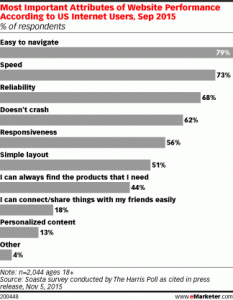
It’s the question that all PR pros dread when pitching a reporter about a client or trend: “Sounds interesting. Do they [client] have a customer I can talk to?”
Ah, the elusive customer. This is the source that almost all reporters want for their story, especially journalists at business publications. For reporters, customers not only help round out the article but they also show credibility. Not just for the angle (hey, this trend is actually impacting real-life companies) but for the vendor he or she is quoting (this company is real and sells products).
There’s nothing better than a client’s customer that is willing to tell their story. For many reporters we work with, it’s the only way they will write about a new trend, a “disruptive technology” or a client. And for our clients, having a customer go on record is critical for attracting new investors, talent and customers, and maintaining a competitive stronghold.
And herein lies our challenge as PR pros.
The customer voice is so important yet they will rarely go on record touting a technology or service that has been implemented at their organization. Sometimes, it’s because they have a blanket policy that prevents them from promoting one company over another. Other times it’s because our client’s technology or service is a competitive advantage. And, every now and then, it’s because their communications department is afraid of a runaway train – too many briefings for a spokesperson, too many chances that the message go wrong, too much lack of control over the story.
We work with amazing clients that truly have technology or services that change the way businesses and consumers function. Their sales are skyrocketing and their businesses are growing. We want to get that story out there, but how do we get customers to speak?
There are a few different tactics that we often suggest to our clients and prospects:
- Create an incentive: Clients can include a line in the customer’s contract that outlines an exchange of product/services for a press reference. This incentive can include a reduction in price, additional support or an expansion of licenses/services.
- Make it manageable: Don’t ask for a press release. Instead, provide the customer with 2-3 specific reporters that the team would like to pitch, a deep dive into the reporters’ background and the list of questions we anticipate (or have confirmed) the reporters will ask. This is another reason why having strong relationships with reporters is so important. If we can show the customer that we’ve worked with a reporter in the past and it has been successful, we increase the odds of them agreeing to move forward.
- Go to the decision maker: Often times, a client’s salesperson asks his or her contact for permission, however, the contact can’t grant it. Instead, reach out to the communications department and have a conversation about the reporters that the team would pitch and the story you’d like to propose, which should always be beneficial for both parties.
- Develop an awards program: Ask customers to nominate their amazing stories for the chance to win an achievement award based on a variety of categories. Within the award program’s terms and conditions, note that winners’ stories will be shared externally.
- Build a relationship with the sales staff: There are a number of different ways to do this. First, suggest to your client that the sales staff have their own incentive and that the drive for customer references is a focus of the entire organization. Perhaps, the salesperson with the most customer references receives an additional vacation day, a monetary reward and/or personal recognition from the CEO. Second, offer to speak with the sales staff about how customer stories in earned media make their job easier, why it’s critical to the PR program and how the PR team can help. Third, arm the sales staff with language they can use to generate initial conversations about press references. Fourth, provide the sales staff with links to secured earned media every week and pull out key facts they can use in a sales situation.
Since PR is all about storytelling, the customer’s perspective is critical to the narrative. Our job is to help our clients find their advocates through creative ways, such as working with their sales team, awarding customer successes, and making it enticing and manageable.
Everyone has heard the saying “straight from the horse’s mouth” and there’s no better example of this than customer stories.
What other tactics have you used successfully?
(246)
Report Post






